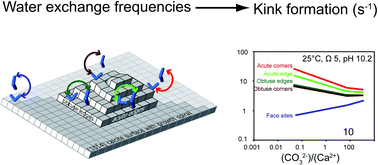Variations in calcite growth kinetics with surface topography: molecular dynamics simulations and process-based growth kinetics modelling†
Abstract
It is generally accepted that

* Corresponding authors
a
Department of Chemistry, University College London, 20 Gordon Street, London WC1 H0AJ, U.K
E-mail:
m.wolthers@ucl.ac.uk
b Department of Earth Sciences-Geochemistry, Utrecht University, P.O. Box 80021, 3508 TA Utrecht, the Netherlands
It is generally accepted that

 Please wait while we load your content...
Something went wrong. Try again?
Please wait while we load your content...
Something went wrong. Try again?
M. Wolthers, D. Di Tommaso, Z. Du and N. H. de Leeuw, CrystEngComm, 2013, 15, 5506 DOI: 10.1039/C3CE40249E
This article is licensed under a Creative Commons Attribution 3.0 Unported Licence. You can use material from this article in other publications without requesting further permissions from the RSC, provided that the correct acknowledgement is given.
Read more about how to correctly acknowledge RSC content.
 Fetching data from CrossRef.
Fetching data from CrossRef.
This may take some time to load.
Loading related content
